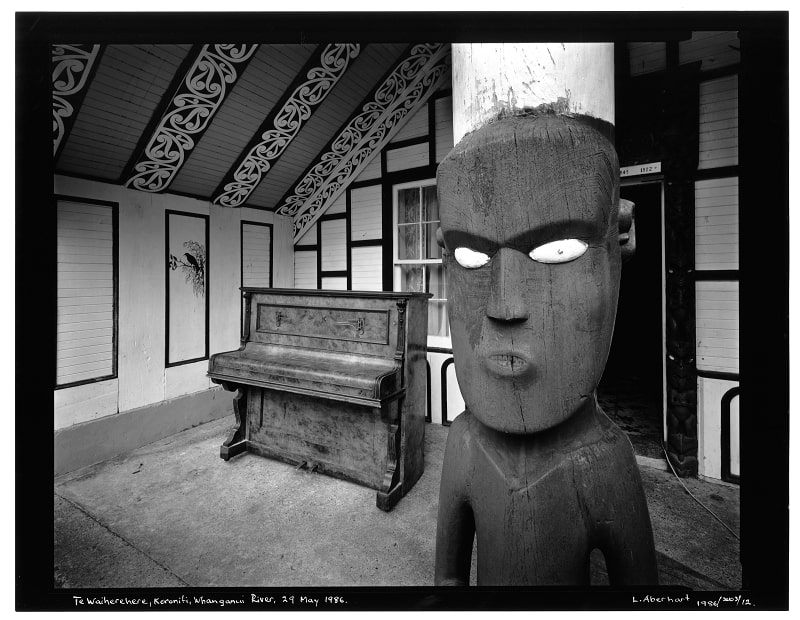CURATOR Gregory O'Brien PUBLICATION Victoria University Press; essays Gregory O'Brien, Justin Paton
The invention of photography coincided with the colonisation of New Zealand. Today, even the most innocent images made by early New Zealand photographers with their cumbersome glass-plate cameras seem tainted by colonialism. New Zealand photographer Laurence Aberhart makes this his springboard.
Aberhart takes an overtly anachronistic approach. He uses an old-school 8 x 10” view camera and contact-prints his black-and-white images. His laborious approach gives his work an antique feel. He documents abandoned buildings and landscapes, recalling the way early photographers, with lengthy exposures, necessarily shied away from animate subjects. (Aberhart is also known for lengthy exposures. Taranaki from Oeo Road, Under Moonlight, 27–28 September 1999 (1999) took five hours.) Aberhart also favours subjects without tell-tale contemporary references, so it’s easier to mistake his images as being from another time.
On the one hand, Aberhart’s project is documentary. Over decades, he has scoured New Zealand, meticulously photographing Masonic lodges, graves, monuments, museums, and whare. Each image is inscribed with the subject and the date it was taken. On the other hand, his work is moody and expressive. His process adds a veil of melancholy to everything he touches, cross-referencing the memorial qualities of the subjects with the morbidity of photography itself.
Aberhart’s work recalls Walter Benjamin’s comment about the early photographer Eugène Atget—that he photographed deserted Paris streets as if they were crime scenes. Atget was determined to document old Paris before it disappeared with modernisation. In a Listener article on the show, Aberhart similarly explains: ‘I'm finding it difficult to photograph in New Zealand. Thirty years ago, there was so much more of what I'm interested in than there is now. In terms of my value system, it's diminishing … I [counter] it by photographing the humble bach before it's gone without making any overt statement about it. I choose not to go out and make the cynical vision of how awful and bland and empty the modern world is becoming.’
While he is famous for photographing New Zealand, Aberhart has also photographed in the United States, China, and Australia.
Aberhart's survey show is accompanied by a doorstopper monograph published by Victoria University Press.










































